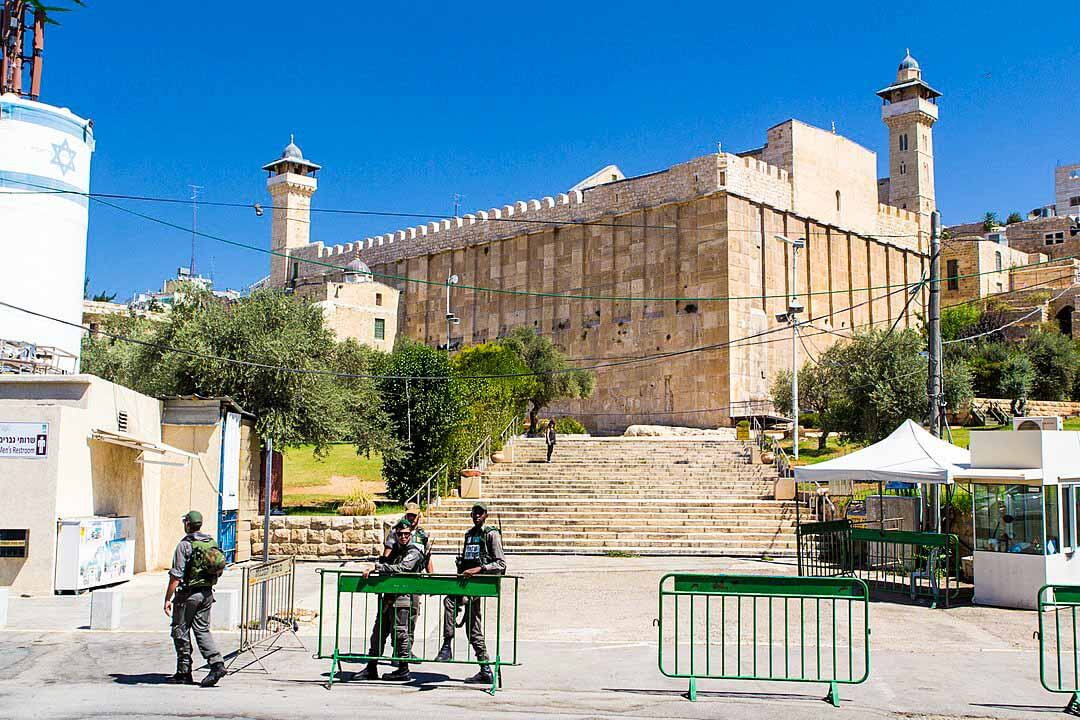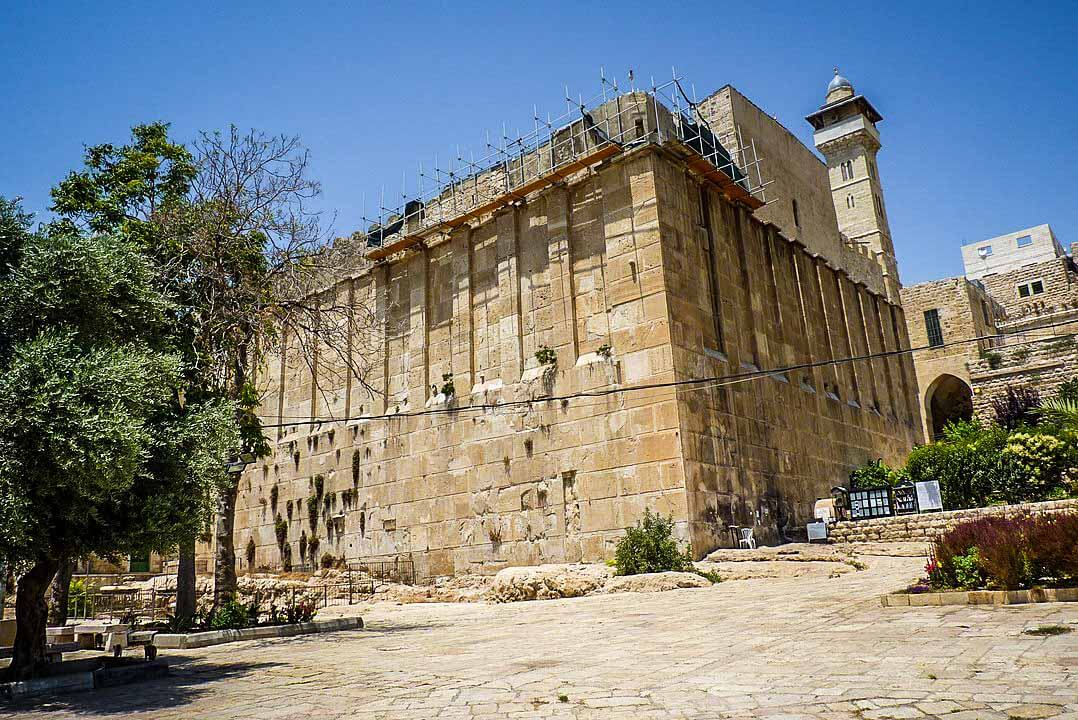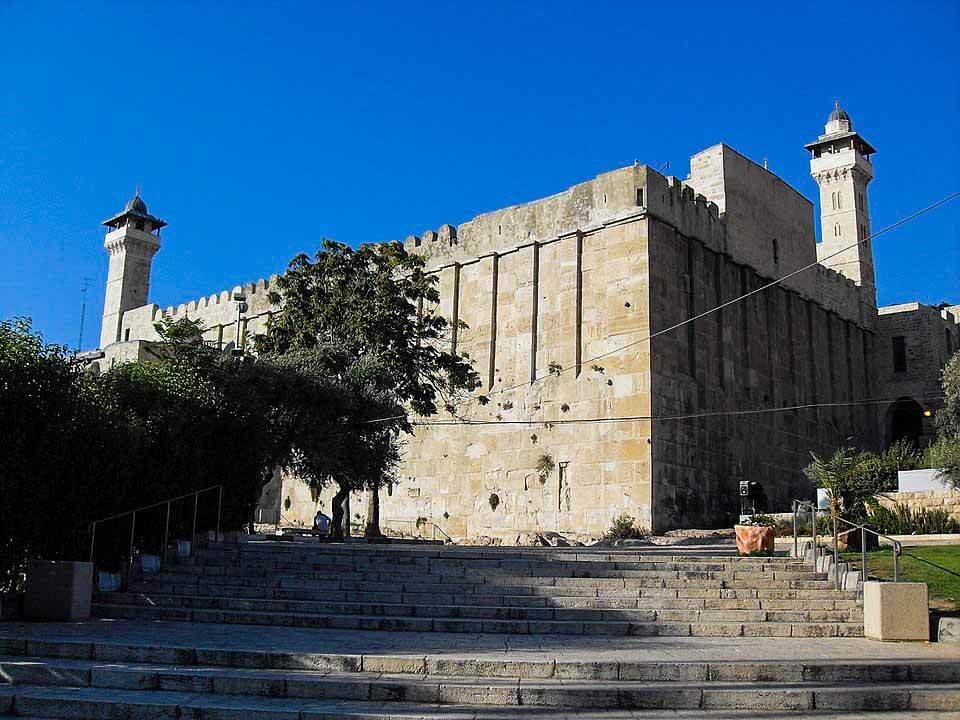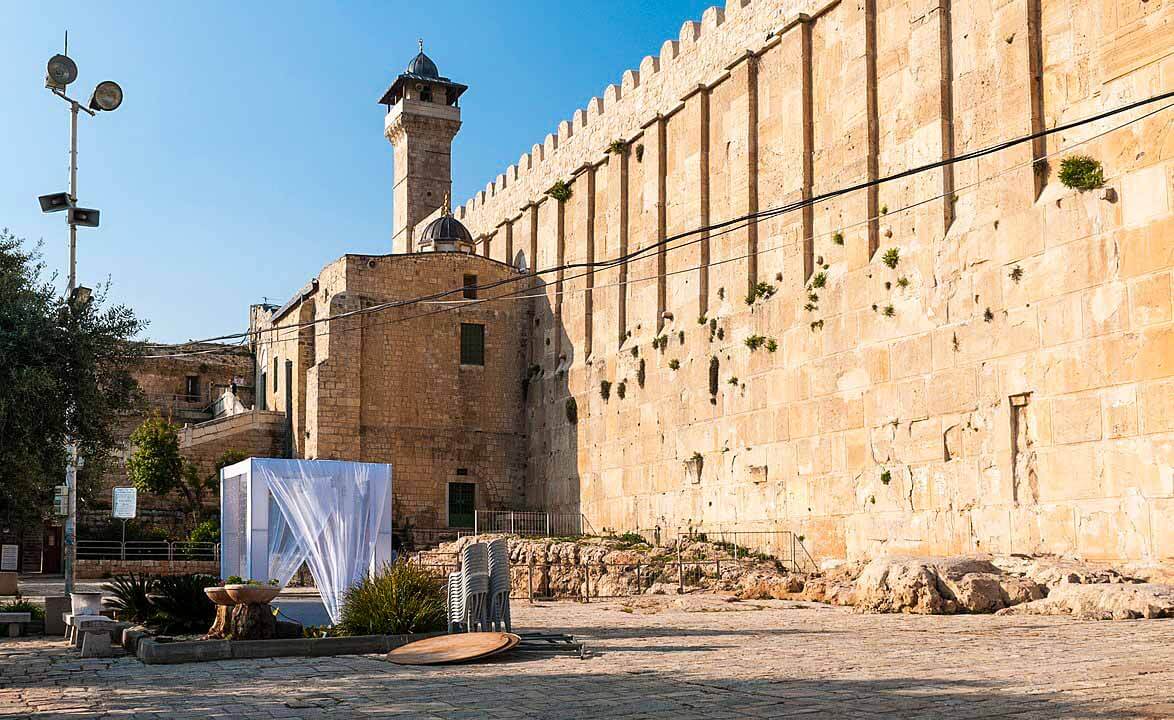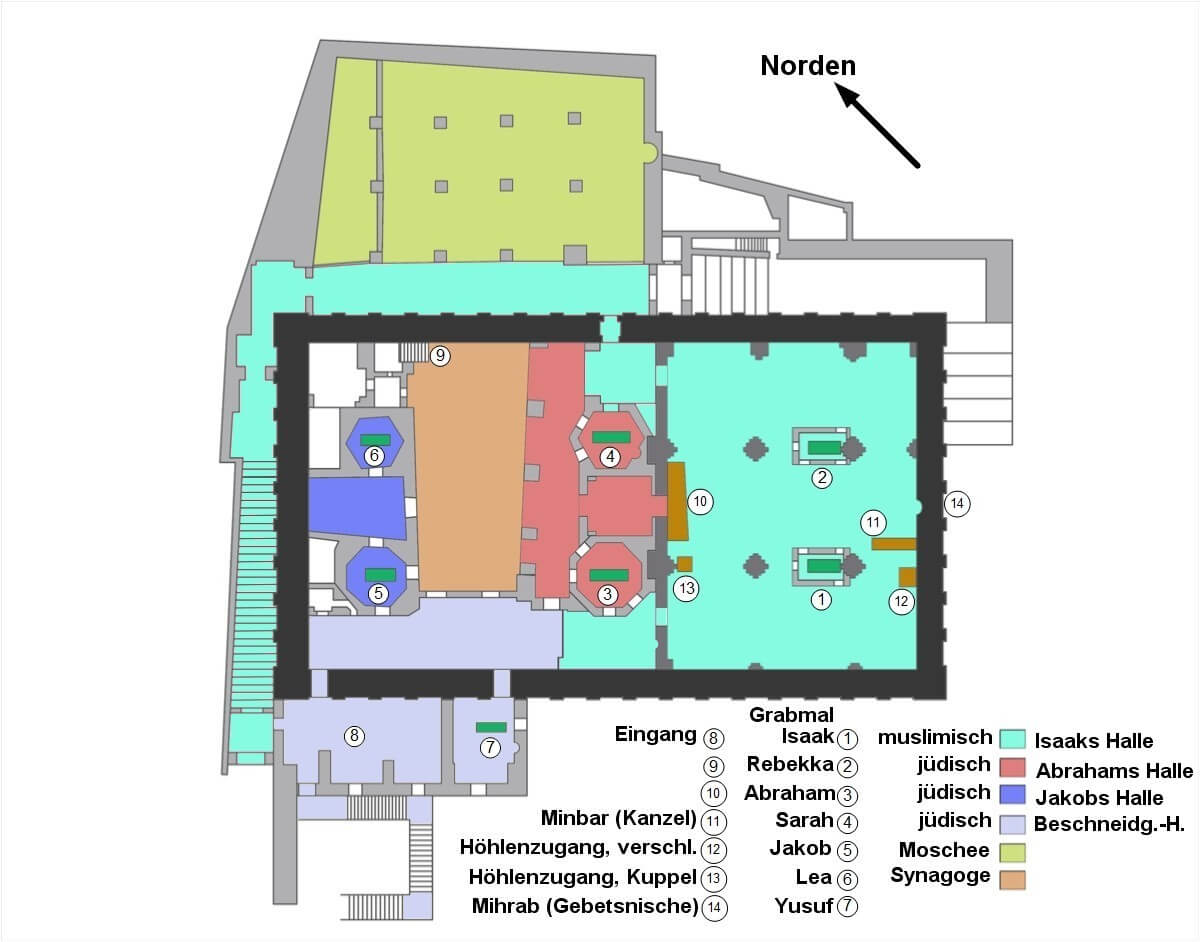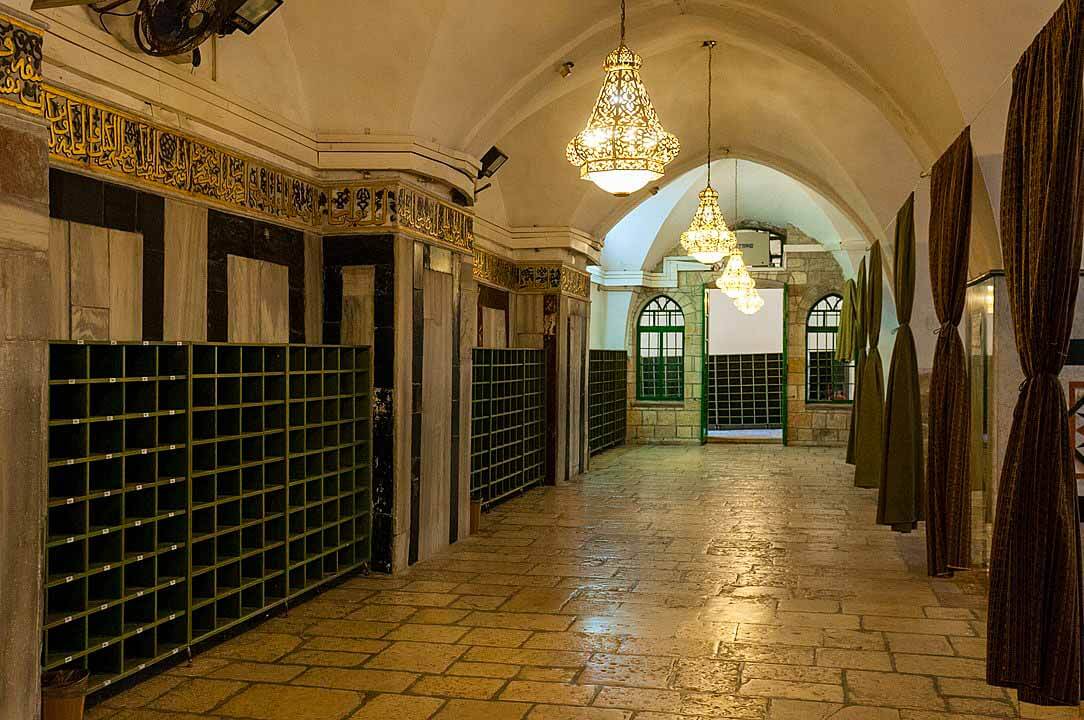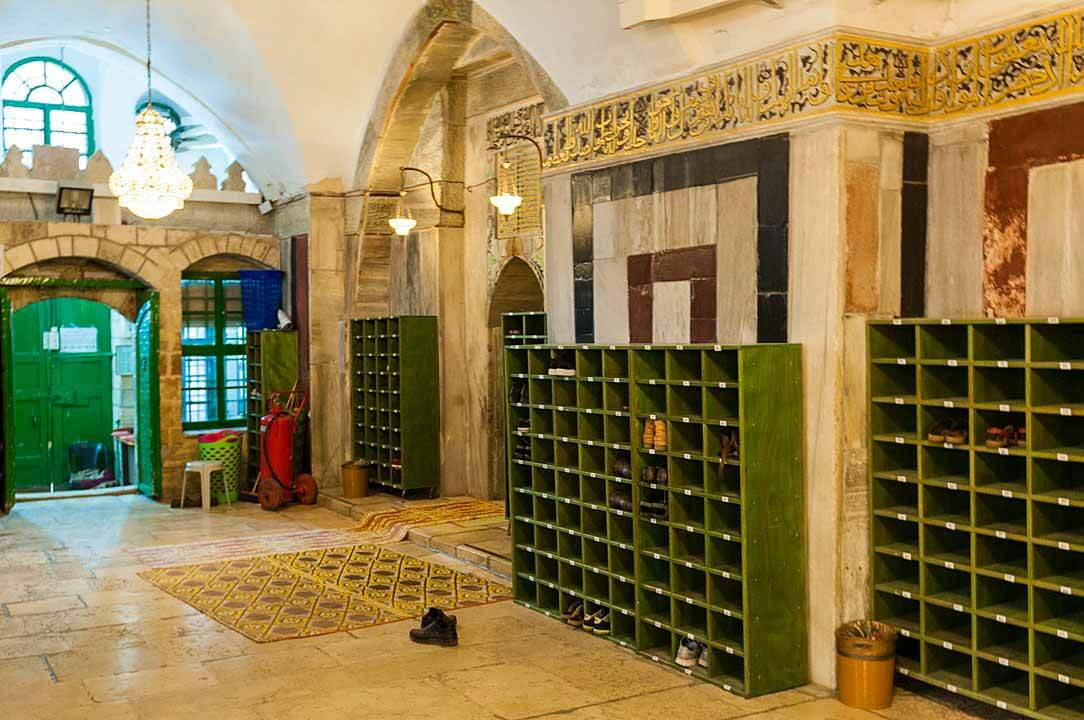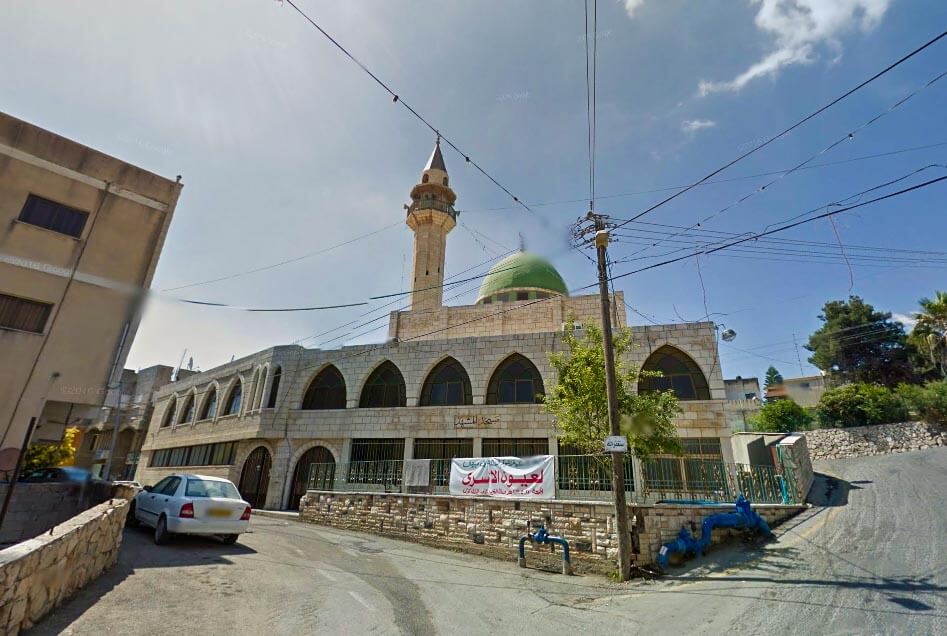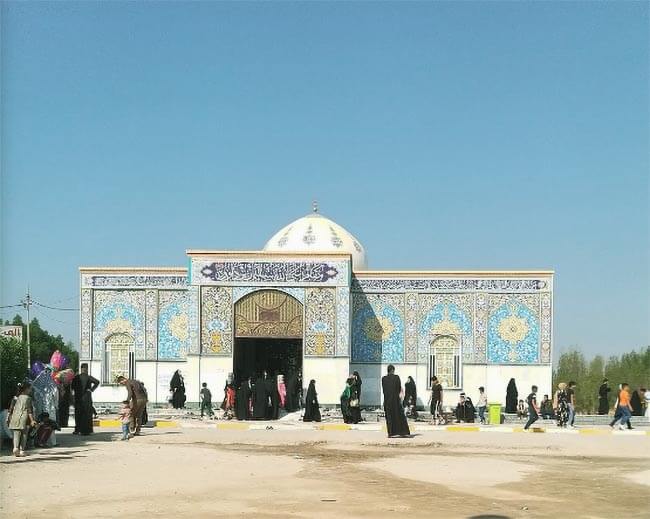Hebron, West Bank – Palestine
Coordinates: 31.524705, 35.110715
Also known as Cave of the Patriarchs or Tomb of the Patriarchs, these are series of caves located in the heart of the Old City of Hebron in the southern West Bank.
Said to be the burial site of following prophts:
Hz. Ibrahim عليه اسلام & Bibi Sarah رضي الله عنها
Hz. Ishaq عليه اسلام and Bibi Rebekah رضي الله عنها
Hz. Yaqub عليه اسلام and Bibi Leah رضي الله عنها
Hz. Yusuf عليه اسلام
Hz. Adam عليه اسلام Bibi Hawwa رضي الله عنها (Acc to some local traditions)
According to the Abrahamic religions, the cave and adjoining field were purchased by Hz. Ibrahim عليه اسلام as a burial plot.
The structure is considered to be the oldest building in the world that has continually been used for the same propose that it was originally built.
The site is holy to Muslims, Jews and Christians.
The Arabic name of the complex reflects the prominence given to Hz. Ibrahim عليه اسلام in Islam. Outside biblical and Quranic sources there are a number of legends and traditions associated with the cave.
Divided between Muslims and Jews
Whole complex is currently divided physically between Muslims and Jews, during most of the year each group are only allowed to enter and pray on ‘other’ side.
It is aside for a few special holidays for each group during which they have access to the entire building and the other group can not enter at all.
Thw whole section was a mosque until it be divided by israeli forces. Muslim section is a mosque (Masjid-e-Khalil Mosque) and the Jewish section now act as a part synagogue and part study area.
The actual graves
The actual burial cave for Hz. Ibrahim عليه اسلام, Bibi Sarah رضي الله عنها, Hz. Ishaq عليه اسلام and others is in a cave below the building. But there are memorial cenotaphs that honor them in the mosque.
The caves under the enclosure are not themselves generally accessible; the waqf have historically prevented access to the actual tombs out of respect for the dead.
Only two entrances are known to exist, the most visible of which is located to the immediate southeast of Hz. Ibrahim’s عليه اسلام cenotaph on the inside of the southeastern section.
The other entrance is located to the southeast, near the mihrab, and is sealed by a large stone, and usually covered by prayer mats.
This passage to the caves was sealed at some time after Hz. Salahuddin Ayyubi رحمة الله عليه had recaptured the area, though the roof of the circular room was pierced, and a decorative grate was placed over it.
In 1967, after the Six-Day War, the area fell into the hands of the Israel Defense Forces, and Moshe Dayan, the Defence Minister, who was an amateur archaeologist, attempted to regain access to the tombs.
Goldstein Massacre
Baruch Kopel Goldstein was an American-Israeli physician, religious extremist, and mass murderer who perpetrated the 1994 Cave of the Patriarchs massacre in Hebron, killing 29 and wounding 125 Palestinian Muslim worshippers. He was beaten to death by survivors of the massacre.
You can still find bullet holes on the side left of the minbar inside Masjid-e-Khalil Mosque.
Al-Shuhada Street
If you’re coming in from Hebron, you must walk by Al-Shuhada Street to get to the Mosque. You must go through an Israeli checkpoint to enter the now occupied area of Hebron to get to the Mosque.
There are no words to describe the feeling of helplessness and despair you sense for the Palestinian people who lost their homes, businesses and identity.
You must experience this area of Hebron for yourself. Feel the pain that Palestinian people have to deal with every day.
Site and city are divided
Jews and Muslims have been restricted to their own areas of this divided site, except that each faith has 10 special days a year on which its members may enter all parts of the building. Pilgrims and tourists may enter both areas.
The city of Hebron is also divided into two zones. The larger part is governed by the Palestinian Authority.
The remainder, including the town centre and market area, is occupied by Jewish settlers and under Israeli military control.
Know This
Getting here with a guide is essential. Hebron is a tense place, heavily secured, and there are places you just can’t go because of how the land and roads are divided and administered. A knowlegable guide will get you in and out. Be prepared for security checks.
30 minutes is sufficient to visit the site. But make some time to walk through what remains of the market. It still has an authentic feel, and the shop owners are very welcoming.




